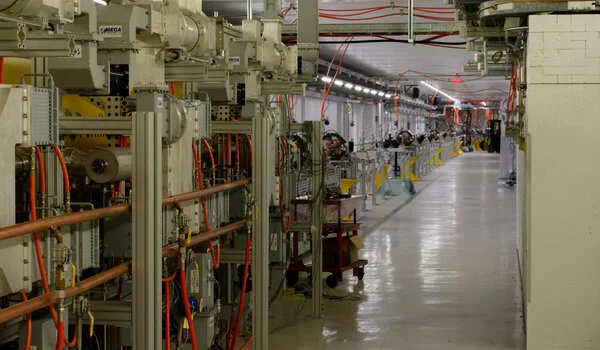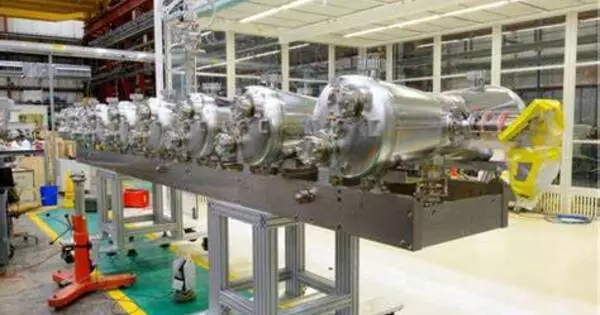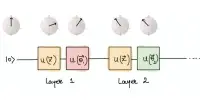Researchers have demonstrated a compact particle accelerator that produces an electron beam with an energy of 10 billion electron volts (10 GeV) in less than 20 meters. Only two other accelerators in the United States can achieve such high electron energies, but both are approximately 3 kilometers long. A wakefield laser accelerator is the name given to this type of accelerator.
Particle accelerators have enormous potential for semiconductor applications, medical imaging and therapy, and materials, energy, and medicine research. However, conventional accelerators require a lot of elbow room (kilometers), which makes them expensive and limits their presence to a few national labs and universities.
Researchers from the University of Texas at Austin, several national laboratories, European universities, and the Texas-based company TAU Systems Inc. have demonstrated a compact particle accelerator less than 20 meters long that generates an electron beam with a 10 billion electron volt (10 GeV) energy. Only two other accelerators in the United States can achieve such high electron energies, but both are approximately 3 kilometers long.
It’s hard to get into a big wave without getting overpowered, so wake surfers get dragged in by Jet Skis. In our accelerator, the equivalent of Jet Skis are nanoparticles that release electrons at just the right point and just the right time, so they are all sitting there in the wave.
Dr. Bjorn
“We can now reach those energies in 10 centimeters,” Bjorn said. “Manuel” Hegelich, associate professor of physics at UT and CEO of TAU Systems, refers to the chamber in which the beam was created. He is the senior author of a recent paper in the journal Matter and Radiation at Extremes that describes their achievement.
Hegelich and his colleagues are currently investigating the use of their accelerator, known as an advanced wakefield laser accelerator, for a variety of applications. They intend to use it to test the radiation resistance of space-bound electronics, to image the 3D internal structures of new semiconductor chip designs, and even to develop novel cancer therapies and advanced medical imaging techniques.
This type of accelerator could also be used to power another device known as an X-ray free electron laser, which could capture slow-motion videos of atomic or molecular processes. Drug interactions with cells, changes inside batteries that could cause them to catch fire, chemical reactions inside solar panels, and viral proteins changing shape when infecting cells are all examples of such processes.

In 1979, the concept of wakefield laser accelerators was first described. An extremely powerful laser collides with helium gas, converting it to plasma and generating waves that kick electrons from the gas out in a high-energy electron beam. Various research groups have developed more powerful versions over the last few decades. The key breakthrough made by Hegelich and his team is based on nanoparticles. An auxiliary laser strikes a metal plate inside the gas cell, causing a stream of metal nanoparticles to be injected, increasing the energy delivered to electrons by the waves.
The laser creates a plasma wave like a boat skimming across a lake, and electrons ride it like surfers.
“It’s hard to get into a big wave without getting overpowered, so wake surfers get dragged in by Jet Skis,” Hegelich said. “In our accelerator, the equivalent of Jet Skis are nanoparticles that release electrons at just the right point and just the right time, so they are all sitting there in the wave. We get a lot more electrons into the wave when and where we want them to be, rather than statistically distributed over the whole interaction, and that’s our secret sauce.”
The researchers used one of the world’s most powerful pulsed lasers, the Texas Petawatt Laser, which is housed at UT and fires one ultra-intense pulse of light every hour, for this experiment. A single petawatt laser pulse contains roughly 1,000 times the installed electrical power in the United States but lasts only 150 femtoseconds or less than a billionth of the time of a lightning discharge. The team’s long-term goal is to power their system with a laser that fits on a tabletop and can fire thousands of times per second, making the entire accelerator far more compact and usable in a wider range of settings than conventional accelerators.
















